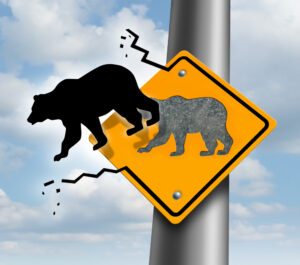Does the Yield Curve Predict an Upcoming Recession? There are numerous signs that analysts use to determine if the United States is about to enter (or is already in) a recession.
Macro statistics (such as quarterly GDP growth), production measurements (such as Industrial Production or the Conference Board Leading Index), labor indicators (such as JOLTS or Initial Jobless Claims), and a variety of other indicators such as housing, confidence, and stock market indices, among others.
However, one appears to be particularly efficient in this regard, according to analysts: the yield curve. In other words, the yield spread between a longer-maturity Treasury asset and a shorter-maturity Treasury asset (for example, the 10-year Treasury yield minus the 2-year Treasury yield). Does the Yield Curve Predict an Upcoming Recession?
Why is this the case?
Primarily because longer-duration assets typically provide greater returns (a term premium) than shorter-duration assets, banks tend to borrow short-term and long-term to profit from this spread. So, if the yield spread is negative, there is no incentive for banks to lend.
Which affects investment
which affects investment and, as a result, production and employment. As a result, a recession (logically occurring sometime after the yield curve inversion) occurs. Does the Yield Curve Predict an Upcoming Recession? Upcoming Recession
Another possible view is that the Fed merely sets short-term rates at an arbitrary level unrelated to savings or the supply and demand for funds. As a result, short-term rates may be higher than they would have been if the Fed had not acted. Does the Yield Curve Predict an Upcoming Recession?
In this scenario

In this scenario, long-term Treasuries are in high demand because there are no attractive alternative investments at the current long-term rates (due to DE globalization or higher expected taxes due to more significant predicted deficits, etc.).
So, when you combine that with the Fed raising short-term rates, you have an inverted yield curve, which always predicts a recession (as evidenced by the absence of bidding for long-term funds). Does the Yield Curve Predict an Upcoming Recession?
But slowly. Although empirical data suggests that a yield curve inversion frequently precedes a recession (except in 1990, when it came near but did not occur), this does not imply that the latter would cause a recession or that it will be the unavoidable conclusion. Upcoming Recession

Because of tight financial conditions, when highly indebted or fragile enterprises bid up for money short-term to keep afloat, short-term yields may climb above long-term yields. And this demonstrates economic problems. Does the Yield Curve Predict an Upcoming Recession?
Lower short-term predicted rates (and thus lower expected growth and long-term rates) would imply another gloomy situation.
However, it is possible that short-term rates could remain unchanged while long-term rates will fall due to a lower-term premium. Although unlikely, such an event would be bullish (though it would not last long). Upcoming Recession
Example
Another example would be if short and long yields fell simultaneously but at different rates. True, the yield curve would invert, but for completely different reasons than in the negative scenarios (for example, a sudden spike in demand for long-term Treasury holdings). Does the Yield Curve Predict an Upcoming Recession?
Also, Fed monetary policy may contribute to this, for example, by slowing or discontinuing its asset sales program, limiting the supply of Treasuries in the open market (thereby stabilizing their price upwards, i.e., lower rates).
Take, for example, inflation. Despite an inverted yield curve, long-term rates, including a lower predicted inflation rate, would be a positive indication for the economy. A basic answer, but one that is sensible. Does the Yield Curve Predict an Upcoming Recession? Upcoming Recession
So, what is the current situation?
As the pessimistic scenario predicted, interest rates on both short- and long-term loans are rising. This indicates a short-term bid-up of resources and reduced motivation for banks to lend. That’s not good.
However, bank prime rates are over twice the effective Fed Funds rate, indicating that banks are still lending and benefiting from it. The fact that both are rising is not a good sign. Does the Yield Curve Predict an Upcoming Recession?
During a recession
During a recession, however, quality bond issuers must raise rates to receive cash. However, when we compare Moody’s Seasoned AAA Corporate Bond to the Federal Funds Rate, we notice a very small spread.
So that’s not going to happen.
Another alternative reading is that the Fed is just raising short-term rates to combat inflation, while long-term rates are priced with a lower inflation rate. As a result, that would not be bearish.
Other factors, such as Japan selling Treasuries (inflating rates) or the Fed’s reverse repo rate policy, could be at work in the current yield curve inversion.
Upcoming Recession
As a result, utilizing the yield curve as a barometer of the economy is a little more complicated than looking at a chart on the Federal Reserve Bank of St. Louis’ website. Upcoming Recession
Two consecutive quarters of negative GDP growth indicate a recession, while a tight labor market indicates a healthy economy. Is a recession likely? Yes. Is the yield curve pointing that way? No, not always. All we can do is wait and see. Upcoming Recession



